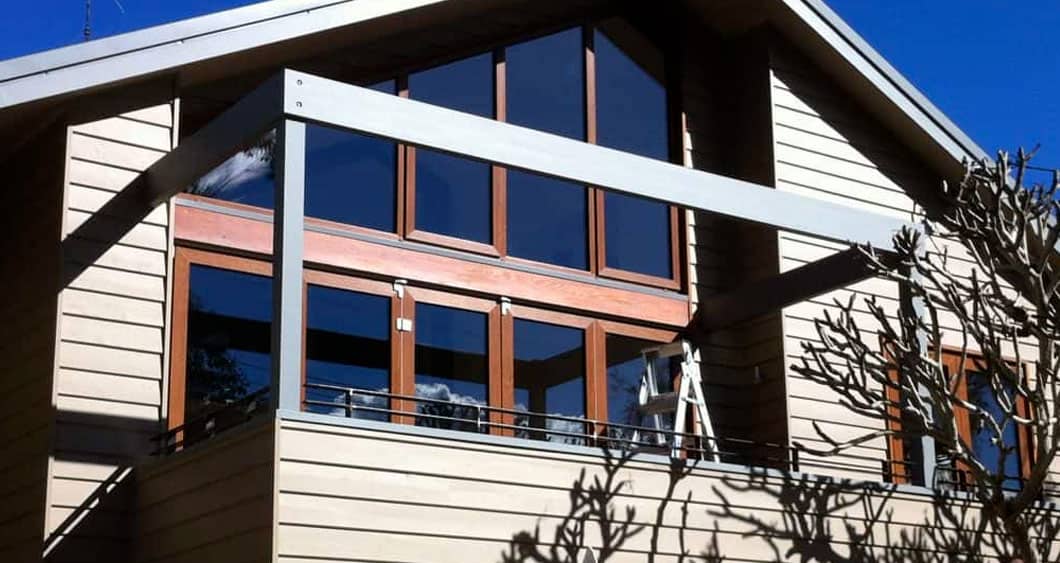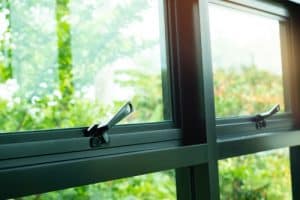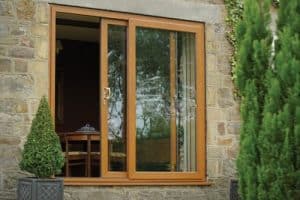Windows and doors – we see them (and use them) every day but, for most of us, we don’t need to consider what material they are made from, unless that is we are considering replacing windows for our property, or even choosing the windows/doors for a new building project. In which case, one of the first questions you will need to ask yourself is, what material should you use for your windows and doors?
Traditionally in Australia the popular choice has been wood, which over the years aluminium also slowly managed to catch up to in popularity. uPVC is still considered a relatively new competitor in the market here in the southern hemisphere, although is actually the most popular choice for most on other continents such as Europe and the states.
So today we are going to take a quick look at the Pros and Cons of each material and let you decide for yourselves which one you think is best for your property. Sound fair? Okay before we start we are going to be honest and admit that before we start we do have a preference (uPVC), so don’t be surprised if you see us comparing wood or aluminium to this along the way…
Timber Windows & Doors
Okay so let’s start with the positives:
Pros Of Timber Windows
- Aesthetics – traditionally timber frames have been a popular choice for many years for those looking to invest in the outward appearance of their property. When comparing to a ‘plastic’ material, you may find it difficult to compare (even with the ‘timber’ finishes that uPVC can offer in a variety of colours).
- Flexibility – no we don’t mean the wood is flexible, but more that the appearance of the wood is actually flexible. With timber you can easily change the colour or finish of the window frame or door, something that you can’t do with other building materials. If you’re indecisive or find yourself changing colours a lot, this is a big win for timber.
- Longevity – wooden windows, if maintained properly with a lot of love and care, can last for many many years, outliving most other materials.
Cons Of Timber Windows
- Cost – as far as window or door options go, choosing timber you are likely going to be choosing the most expensive option (compared to uPVC which is usually the most cost effective option).
- Maintenance – although they are long lasting, that is only if they are properly maintained. Timber is not weatherproof, meaning timber frames and doors will need constant care to ensure they don’t warp with water and sun exposure, not to mention loose that aesthetically appealing look they are there for in the first place. Did we mention that uPVC as a material takes no maintenance whatsoever?
- Fire hazard – when you’re creating a bonfire you know what material is the go to… and this is the same material you are using for your window and door frames. Of course the chance of a fire in your home should remain low, but something to consider as a con (uPVC is a fire resistant material by the way).
Aluminium Windows & Doors
The modern Australian homes and properties seem to use aluminium as a lower maintenance alternative to timber. But is this really the best solution? Let’s look at the pros and cons again.
Pros Of Aluminium Windows
- Strength – the top advantage of aluminium as a material has to be it’s absolute strength. This allows for slimmer frames and makes it long lasting as a material option. This also makes them top when it comes to security.
- Low Maintenance – very much like uPVC, aluminium is a low maintenance material that once installed requires nothing to maintain it’s durability and appearance. No need to re-apply a finish to maintain the colour or to prevent rust.
- Recyclable – if you’re looking to improve your carbon footprint then choosing a recyclable material such as aluminium (or uPVC) is a way to do that.
Cons Of Aluminium Windows
- Poor energy efficiency – have you ever touched metal on a very cold day, or even a very hot day? Aluminium is a very good conductor of heat, meaning that unlike a material like uPVC (or timber), it is the least energy efficient material to use for a window or door frame.
- Condensation – following on from the above, because aluminium is such a good conductor of heat, this makes them susceptible to condensation forming.
- Aesthetics – a pro of timber windows, but a con for aluminium windows. Aesthetically, there isn’t as much versatility in the appearance and design of aluminium windows compared to timber or uPVC windows.
uPVC Windows & Doors
Okay so that leaves us with uPVC as a window and door material. As you have probably noticed we have already touched on the benefits of uPVC throughout this article, so we will keep the pros section short and sweet.
Pros Of uPVC Windows
- Aesthetics – uPVC is available in a wide range of colours and finishes, meaning that you can make the right choice for your home or property, for example a clean traditional white, or a timber look finish, or even a dark grey.
- Energy efficient – uPVC as a material is very energy efficient as it is a low conductor of heat.
- Environmentally friendly – uPVC is a recyclable material.
- Low maintenance – uPVC requires no maintenance once installed, just a quick wipe down every now and then with a damp cloth to keep it clean. It is weather resistant to the rain and sun, no treatments needed.
- Fire resistant – uPVC as a material is fire resistant, meaning that in the unfortunate event of a fire your window frames aren’t going to add to the problem.
- Cost – uPVC is one of the cheapest building materials available on the market, despite its longevity, versatility, energy saving capabilities.
And we are not going to be totally biased, of course uPVC (as great as it is as a potential material for your windows or doors), has its cons too.
Cons Of uPVC Windows
- Cheap – as much as this is a benefit, depending on your opinion it can be viewed as cheapening the appearance of windows/doors depending on the building they are installed on.
- Plastic – although uPVC is a recyclable material, it is still a form of plastic, so when it is created, or destroyed, it still gives off dangerous fumes. Also as it is a form of plastic, this may not be aesthetically appealing.
- Softer – uPVC is a softer material than aluminium and wood.
We hope that our list of pros and cons has helped towards you making a decision about the material that you would like to use for your windows and doors. But if you are still on the fence and would like to know more then why not come and visit our Showroom, where you can really get a feel for what uPVC looks like in real life? Or contact our team who will be able to answer any questions that you may have an provide you with a free, no obligation quote for your project.
SIMPLE STEPS TO REQUEST A QUOTE?
Submit an online quote enquiry and we’ll be in touch and discuss the quote in more detail. Once all the relevant project details are obtained, we will be able to provide you with a final detailed quote.




